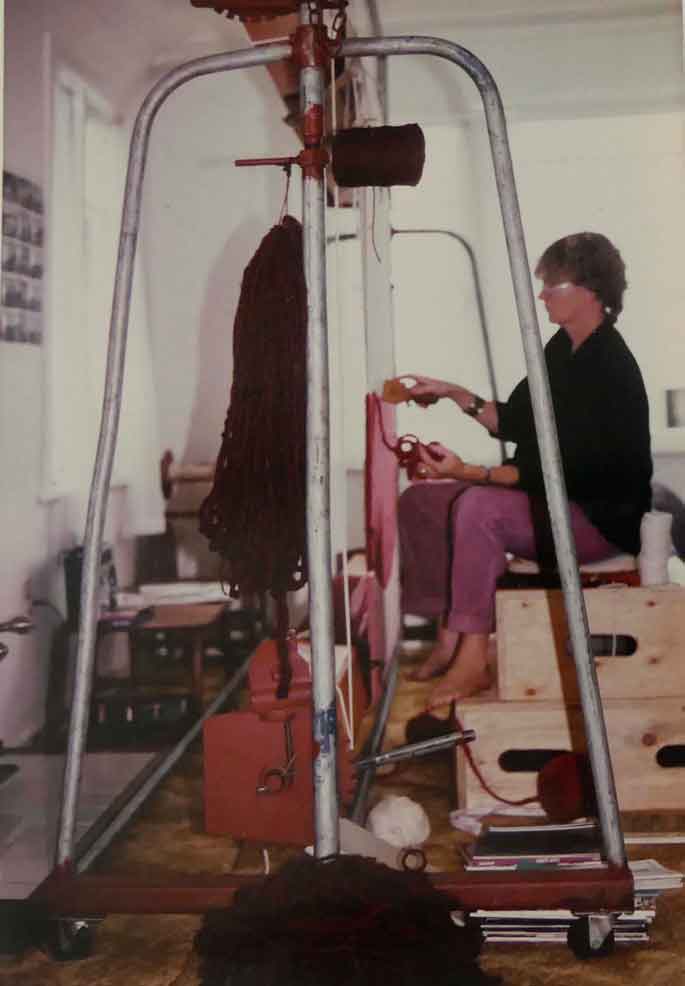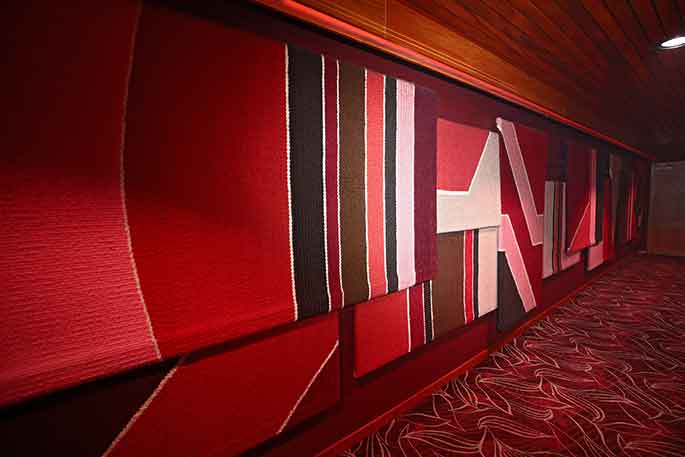On the back wall of a Tauranga theatre, a series of handmade woollen panels have been quietly overperforming for decades.
Not only have the textiles fulfilled their role as acoustic-enhancing decorations inside the Baycourt theatre, they helped ignite the career of renowned New Zealand tapestry artist Marilyn Rea-Menzies. The textured artworks introduced her to royalty, too.
Though Marilyn had painted and drawn since childhood, weaving was a relatively recent medium when she and fellow artist Jill Kobiyashi were contracted to undertake the task. Both women were living in Tauranga at the time.
'The Baycourt tapestries were my first major public commission,” says Marilyn, as the venue's 40th anniversary celebrations take place this month.
'It did launch my career in a way. It gave me the confidence I could work on a big commission and achieve it. And it became a really strong part of my life; my looms have almost never been empty since.”
Marilyn says the job also placed her and Jill in front of a princess.
'I'd just put the first tapestry on one of the frame looms when Prince Charles and Princess Diana came to open Baycourt. We'd only just started weaving. They set us up in the foyer for the visit and Diana stopped and talked. She was very tall, very, very thin, very gracious.
'I talked to her for about five minutes, about textiles and embroidery and what we were doing. I really got quite a buzz out of that.”
Marilyn had moved to Tauranga with her then-husband and five young children in the early-1970s and taught herself to weave with the aid of a book from the city library.
The hands-on, practical nature of the ancient craft immediately appealed. She discovered the local spinners and weavers club and began producing small tapestries.
The Baycourt arts and community facility was only partly complete when its architect Miles Warren called for overlapping wall hangings in shades of red, utilising bold geometric designs that reflected the shapes in the building itself.
Jill and Marilyn put their heads together, they submitted drawings and a painting outlining their ideas and Tauranga City Council liked what it saw.
The project, which took more than 18 months of full-time work to complete, required the two artists to spin most of their own wool and create frame looms before they could begin weaving.
'We did a lot of spinning on a jumbo spinning wheel, from natural fleece. Some was carpet wool. The hangings are quite thick and bulky, with fine yarns in behind.
'I know the textiles help absorb the sound, for the acoustics; though I'm not an expert in that side of things.”
Marilyn now lives in her hometown of Westport, though she's returned to Tauranga to clean, tidy and rehang the textiles. She says her fellow artist moved to Canada and did not pursue weaving to the same extent. The pair caught up in person, several years ago.
Marilyn's work, which includes paintings as well as tapestry portraits, continues to be exhibited around New Zealand and has been shown overseas. Her large public commissions include a tapestry screen at Government House in Wellington, and the millennium tapestry inside the Christchurch City Council building.
However, the Baycourt project is still firmly etched in her mind four decades on.
'It was pretty special. And it was a challenge. We learned such a heap.”
The tapestries were unveiled in February 1995.
View the woven mural and hear more behind-the-scenes stories at the B40: Whānau Day event at Baycourt Community and Arts Centre tomorrow, Saturday, April 29.
The event, which wraps up 10 days of 40th anniversary celebrations, takes visitors behind the theatre curtain in a series of free guided tours. The Baycourt lawn will host face painters, balloon sculptors, roaming performers and food carts. Free entry from 10am-2pm.

Marilyn Rea-Menzies creating the tapestries for Baycourt back in the 1970s. Photo: supplied.

